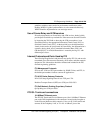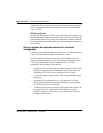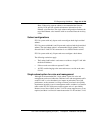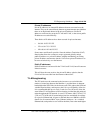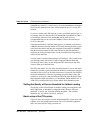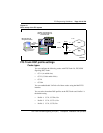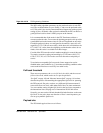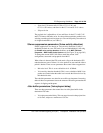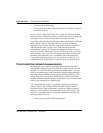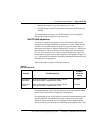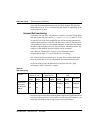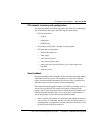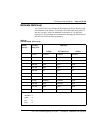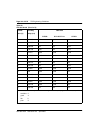
ITG Engineering Guidelines Page 137 of
378
ITG Trunk 2.0 ISDN Signaling Link (ISL) Description, Installation and Operation
• 30 ms for G.729 Annex AB, G.729A, G.723.1 5.3K, and
G.723.1 6.3K codecs, and 10ms for the G.711A and G.711U codecs.
• 30 bytes for fax
The payload size is adjustable to 10 ms and 20 ms for the G.711A/G.711U
and G.729 Annex AB codec series. In a site pair that experience packet losses,
selecting a smaller payload size improves voice and fax quality, but at the cost
of a higher bandwidth use (see Table 5).
Silence suppression parameters (Voice activity detection)
Silence suppression, also known as Voice Activity Detection (VAD) is
enabled by default on a new ITG node. You can enable/disable VAD using
the
Enable voice activity detection
checkbox on the
MAT ITG Node
Properties -- DSP Profile Codec Options
tab (See Figure 32 on page 202.)
To change the current DSP VAD state to match the current VAD
configuration, retransmit card properties from MAT.
When silence is detected, the ITG node sends a flag to the destination ITG
node that denotes start of silence. No voice packets are sent until the silence
period is broken. There are two parameters that control silence suppression:
• Idle noise level. This is set at a default level of -65 dBm0.
• Voice activity detection threshold. This is set at a default of 0dB. Voice
packets are formed when the audio level exceeds the idle noise level by
this threshold value.
These default parameters are suited in most office environments. Increasing
either of these two parameters lowers the amount of IP traffic generated at the
expense of clipping and dropouts.
Jitter buffer parameters (Voice playout delay)
There are three parameters that control the size of the jitter buffer in the
destination ITG node.
• Voice playout nominal delay. This can range from twice the payload size
to 10 times, subject to a maximum of 320 ms.



